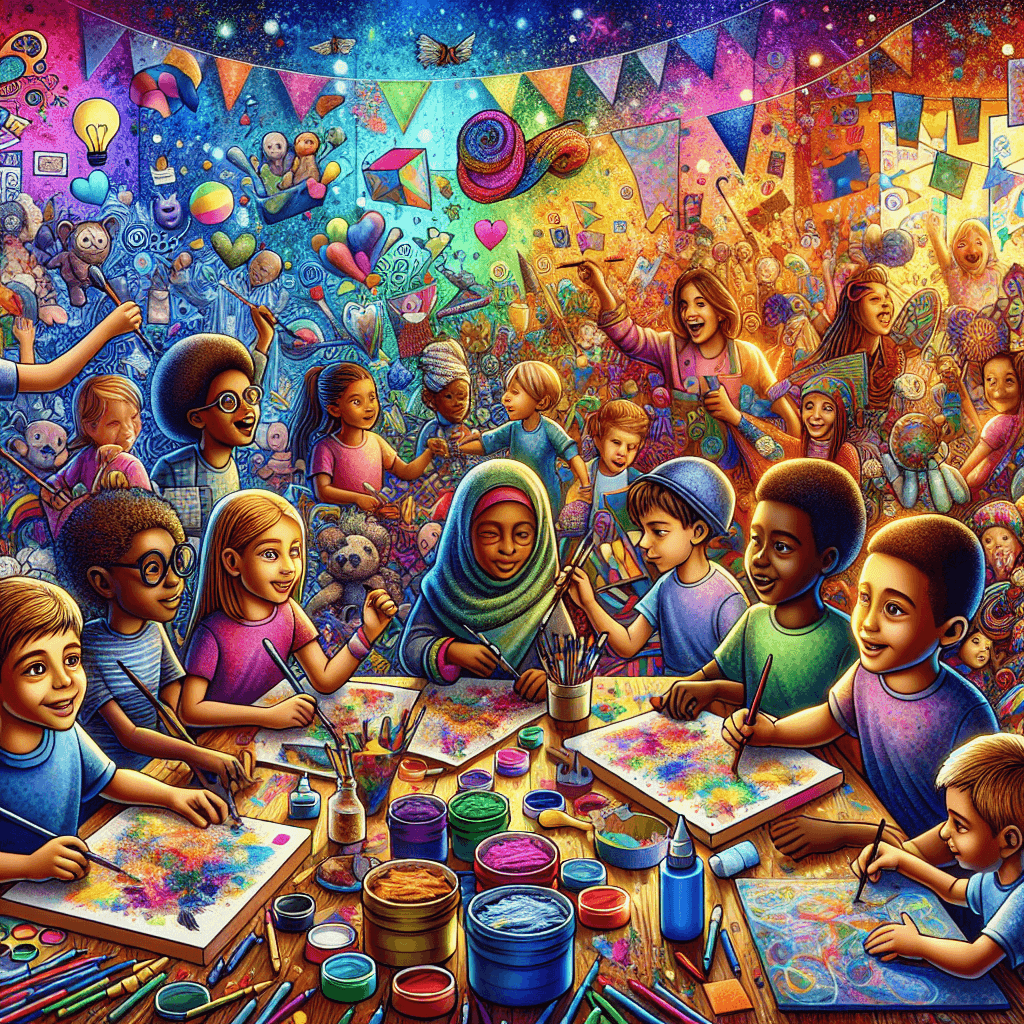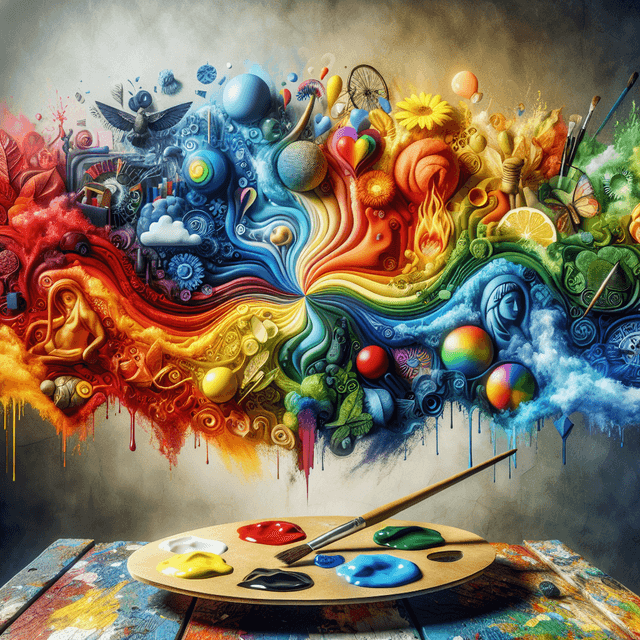Creative Art Projects for Young Minds
TL;DRThis article explores a range of creative art projects suitable for children, emphasizing the importance of art in child development. It provides ideas for nature-inspired art, recycled material creations, painting and drawing, sculpture and 3D art, and digital art projects. Additionally, it offers tips for integrating art with other subjects and organizing art projects effectively.

Table of Contents
The Importance of Art for Children
Art plays a crucial role in the development of children. It aids in the enhancement of motor skills, language development, decision-making, risk-taking, and cultural awareness. Through art, children learn to interpret, criticize, and use visual information. They also learn to make choices based on their own thoughts and feelings. Art encourages children to express their emotions and can be a therapeutic tool that helps them to understand and cope with their feelings.
Art Project Ideas
Nature-Inspired Art
Leaf Painting and PrintingChildren can use leaves of various shapes and sizes to create patterns and prints on paper. This activity encourages exploration of the natural world and teaches pattern recognition and symmetry.
Rock PaintingDecorating rocks with paints or markers can be a fun way for children to express their creativity. It also provides an opportunity to discuss the concept of permanence in art.
Stick SculpturesCreating sculptures from sticks and twigs found in nature can be an excellent exercise in balance and form. This project can also introduce children to the idea of three-dimensional art.
Recycled Material Creations
Cardboard CastlesUsing old cardboard boxes, children can construct their own castles, complete with towers and drawbridges. This project stimulates imaginative play and architectural design.
Plastic Bottle PlantersTurning used plastic bottles into planters not only teaches children about recycling but also about caring for living things as they watch their plants grow.
Newspaper CollageA collage made from old newspapers can be a way to discuss texture, composition, and color contrast, while also highlighting the importance of reusing materials.
Painting and Drawing
Watercolor ExplorationExperimenting with watercolors allows children to understand color mixing and the effects of water on pigment. It's a sensory-rich activity that fosters fine motor skills.
Charcoal or Pastel SketchingUsing charcoal or pastels, children can explore different drawing techniques and the use of light and shadow in art.
Themed Drawing PromptsProviding prompts like "draw your favorite day" or "illustrate a dream" can help children channel their thoughts and feelings into visual art.
Sculpture and 3D Art
Clay ModelingWorking with clay can be a tactile experience for children, helping them to understand form and structure. They can create anything from abstract shapes to detailed figures.
Paper MachePaper mache projects involve layering paper and glue to create three-dimensional objects. This can be a messy but highly engaging and rewarding process.
Construction with Building BlocksUsing building blocks or LEGO, children can create sculptures that can be as abstract or as realistic as they like. This activity enhances spatial reasoning and creativity.
Digital Art Projects
Graphic Design with AppsThere are various child-friendly apps that introduce the basics of graphic design, allowing children to create digital art with ease.
Stop Motion AnimationCreating stop motion animations can be an exciting way for children to bring their art to life. It teaches patience, timing, and storytelling.
Digital PaintingTablets and computers offer a canvas for digital painting, where children can experiment with colors and brush strokes without the mess of traditional painting.
Integrating Art with Other Subjects
Art can be a cross-curricular tool that enhances learning in other subjects. For example, drawing a historical event can deepen understanding in history, while creating geometric patterns can reinforce math concepts. Art projects can also be used to explore scientific topics, like illustrating a life cycle or creating a model of the solar system.
Tips for Organizing Art Projects
- Preparation: Gather all materials ahead of time and ensure there's enough for everyone.
- Instructions: Provide clear, step-by-step instructions and demonstrate techniques when possible.
- Flexibility: Allow children to interpret the project in their own way, fostering creativity and individual expression.
- Clean-up: Teach children to clean up after themselves, which is an important life skill.
- Display: Showcase completed art projects, giving children a sense of pride and achievement.
Conclusion
Creative art projects are invaluable in the development of young minds. They foster creativity, enhance cognitive abilities, and provide a platform for emotional expression. By incorporating a variety of art projects into children's activities, we can help cultivate a new generation of thinkers, innovators, and artists. Whether through painting, sculpture, or digital media, the world of art offers endless possibilities for learning and growth.



